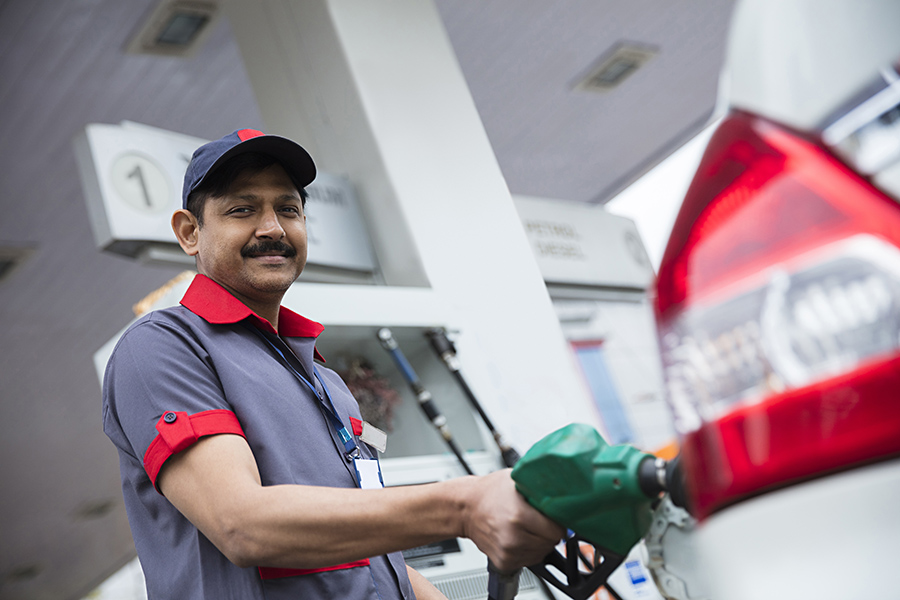HOW IT WORKS
Petrol Pumps

- Fuel stations primarily dispensing gasoline or diesel fuel for vehicles.
Petrol pumps, also known as gas stations or fuel stations, are establishments that primarily sell gasoline, diesel, and other types of fuel for vehicles. These businesses play a crucial role in providing fuel for transportation and are a key part of the automotive industry.
Key characteristics of petrol pumps include their strategic locations along highways, major roads, and urban areas to cater to the needs of both local residents and travelers. They typically offer a range of fuel options, such as regular unleaded, premium, and diesel, as well as additional services like car washes, convenience stores, and restrooms.
The target audience for petrol pumps is broad, encompassing drivers of cars, trucks, motorcycles, and other vehicles that require fuel. These establishments serve both individual consumers and commercial vehicles, making them essential for daily commuting, transportation, and logistics.
Common products and services offered at petrol pumps include fuel dispensing, vehicle maintenance items like oil and windshield washer fluid, snacks, beverages, and other convenience store items. Some petrol pumps also provide services like tire inflation, car vacuuming, and propane refills.
Typical business models for petrol pumps involve purchasing fuel from oil companies or wholesalers and selling it to customers at a markup. Profit margins in the fuel retailing industry can be slim, so petrol pumps often rely on volume sales and additional services to generate revenue.
Notable trends and innovations within the petrol pump industry include the adoption of technology to streamline operations, such as automated fuel pumps, digital payment options, and loyalty programs. Some petrol pumps are also investing in alternative fuels like electric vehicle charging stations to cater to the growing demand for eco-friendly transportation options.
One of the unique value propositions of petrol pumps is their convenience and accessibility, providing essential services for drivers on the go. However, these businesses face challenges such as fluctuating fuel prices, competition from larger chains, regulatory compliance, and the need to adapt to changing consumer preferences and vehicle technologies.
Overall, petrol pumps play a vital role in the automotive ecosystem, serving as a key link between fuel suppliers and consumers while offering a range of products and services to meet the diverse needs of drivers.
Initial Stage: In the operational cycle of a petrol pump business, the initial stage involves identifying market opportunities and consumer needs. This includes understanding fuel demands in the area, potential competition, and consumer preferences.
Product Formulation: The business formulates its products and services by offering a variety of fuel options, such as gasoline, diesel, and possibly alternative fuels. Unique features may include 24/7 service, clean facilities, and loyalty programs to attract and retain customers.
Marketing and Promotion: Marketing strategies may include signage, advertising in local media, social media presence, and partnerships with local businesses. Promotional strategies could involve discounts, loyalty programs, and customer referral incentives.
Sales and Distribution: The petrol pump business utilizes various channels for distribution, including fuel pumps, convenience stores, and possibly car wash services. Customer interactions are crucial, with trained staff providing efficient and friendly service.
Post-Sale Services: Post-sale services may include car maintenance products, air/water services, and possibly car repair facilities. Ensuring customer satisfaction and loyalty is key to repeat business and positive word-of-mouth.
Continuous Improvement: The business may gather market feedback through customer surveys, monitoring sales data, and feedback from staff. Continuous improvement measures could include upgrading facilities, offering new services, and adapting to changing market trends.
In the petrol pump industry, daily operations encounter challenges in resource management (staffing, equipment maintenance), communication & collaboration (between employees and customers), process inefficiency (long wait times, fuel shortages), inventory management (accurate tracking of fuel levels), quality control (ensuring fuel quality standards), technology integration (upgrading pumps and payment systems), data management (tracking sales and inventory), and risk management (safety protocols and compliance). To overcome these challenges, businesses can implement automated inventory systems, staff training programs, regular equipment maintenance schedules, customer feedback mechanisms, and safety audits. By addressing these key areas, petrol pump businesses can improve efficiency, customer satisfaction, and overall profitability.
-
Testimonial: “Our petrol pump faced consistent challenges in resource management, communication, and process inefficiency, leading to customer dissatisfaction and decreased productivity. Webspad stepped in with their user-friendly tools and tech expert support, transforming our operations. Their automated inventory system streamlined fuel tracking, reducing shortages and optimizing stock levels. With improved communication features, our staff and customers now interact seamlessly, enhancing service quality. The process efficiency tools minimized wait times and increased throughput, boosting overall productivity. Thanks to Webspad, we’ve overcome these hurdles and witnessed a significant improvement in our operations, customer satisfaction, and profitability. We highly recommend Webspad for any petrol pump looking to bridge the digital gap and achieve business goals effectively.”
Petrol Pumps Merchant Tweet / X

